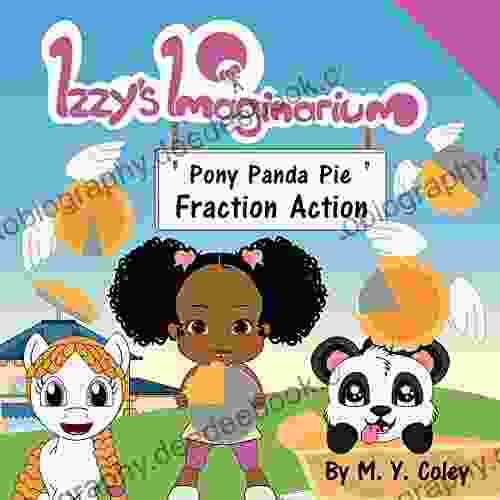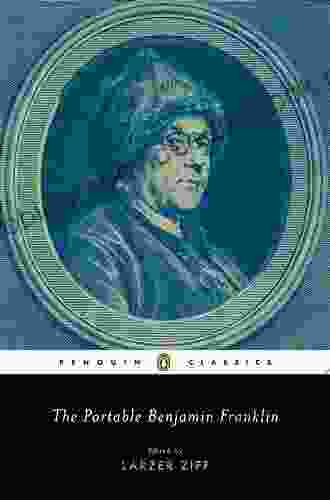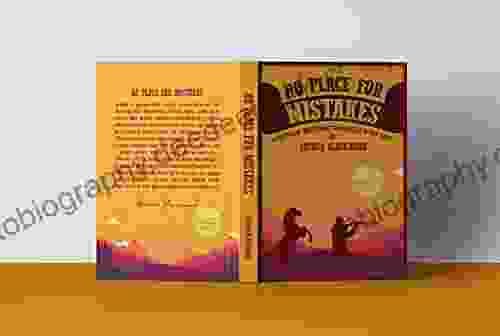The Political Theory of Compound Republic: A Comprehensive Examination

In the realm of political philosophy, the concept of a compound republic stands as a distinctive approach to governance that challenges traditional notions of statehood and sovereignty. This article delves into the intricate theoretical framework of compound republics, exploring their historical origins, key characteristics, and contemporary relevance in international affairs.
The idea of a compound republic can be traced back to ancient Greece, where philosophers such as Plato and Aristotle pondered the nature of political organization. Plato's "Republic" proposed an ideal society governed by a philosopher-king, while Aristotle's "Politics" highlighted the importance of layered political structures that balanced monarchic, aristocratic, and democratic elements.
During the Enlightenment, theorists such as John Locke and Montesquieu further developed these ideas, arguing for the separation of powers and the establishment of constitutional limits on government authority. These writings laid the intellectual groundwork for the American Revolution and the subsequent founding of the United States as a compound republic.
4 out of 5
| Language | : | English |
| File size | : | 1088 KB |
| Text-to-Speech | : | Enabled |
| Screen Reader | : | Supported |
| Enhanced typesetting | : | Enabled |
| Word Wise | : | Enabled |
| Print length | : | 316 pages |
A compound republic is a unique form of political organization characterized by the following key features:
- Federalism: A compound republic is a union of multiple states or entities that delegate certain powers to a central authority while retaining their own autonomy. This federal structure allows for both local self-governance and cooperation among constituent units.
- Decentralization: Power is distributed across multiple levels of government, including state, regional, and local authorities. This decentralization promotes accountability, responsiveness to local needs, and protects minority rights.
- Constitutionalism: A written constitution establishes the fundamental principles of government, including the separation of powers, the rule of law, and the protection of individual freedoms. The constitution acts as a bulwark against tyranny and ensures that the government operates within prescribed limits.
- Checks and Balances: Different branches of government are given the ability to check and balance each other's actions, preventing any one branch from becoming too powerful. This system of checks and balances promotes accountability and prevents the abuse of power.
- Citizen Participation: In a compound republic, citizens actively participate in the political process through elections, public discourse, and civil society organizations. This participation ensures that government decisions reflect the will of the people.
Compound republics offer several advantages over centralized and unitary states:
- Increased Legitimacy: By distributing power across multiple levels of government, compound republics enhance the legitimacy and responsiveness of the state. Citizens feel more connected to their local representatives and have a greater sense of ownership over political decisions.
- Protection of Minority Rights: The decentralized nature of compound republics helps to protect the rights of minority groups and prevent the tyranny of the majority. Local governments can tailor policies to meet the specific needs of diverse communities.
- Flexibility and Adaptability: Federal structures allow for flexibility and adaptability in policymaking. States and local governments can experiment with innovative solutions to local problems, while the central authority provides coordination and oversight to ensure national coherence.
- Economic Efficiency: By empowering local governments to make decisions that affect their economies, compound republics promote economic growth and efficiency. Local officials are better positioned to understand and respond to the unique needs of their communities.
- Stability and Conflict Prevention: The distribution of power and the protection of minority rights in compound republics can help to prevent conflict and promote social cohesion. Giving local populations a say in their governance reduces resentment and fosters a sense of belonging.
Despite their advantages, compound republics also face certain challenges:
- Complexity: Federal structures can be complex to design and operate, requiring extensive coordination and cooperation among multiple levels of government. This complexity can sometimes lead to delays and inefficiencies.
- Regional Disparities: If not managed carefully, federalism can lead to regional disparities in terms of economic development, access to services, and political influence. This can create tensions between different parts of the country.
- Gridlock and Deadlock: The checks and balances inherent in compound republics can sometimes result in gridlock or deadlock, making it difficult to pass legislation or implement policies. This can hinder the government's ability to respond effectively to urgent challenges.
- Lack of Accountability: With power distributed across multiple levels of government, it can be difficult to pinpoint responsibility for policy failures. This lack of accountability can undermine public trust and make it difficult to address problems.
- External Pressures: Compound republics can be vulnerable to external pressures, such as interference from foreign powers or global economic shocks. This can strain the unity and stability of the federation.
In the contemporary world, the political theory of compound republics has gained renewed relevance in the context of international affairs. Globalization and interdependence have created a need for new forms of cooperation and governance that transcend traditional national boundaries.
One example of a modern-day compound republic is the European Union (EU). The EU is a unique supranational organization that combines the characteristics of a federal system with elements of intergovernmental cooperation. Member states have pooled their sovereignty in certain areas, such as trade, monetary policy, and foreign affairs, while retaining their autonomy in other areas.
Other examples of compound republics include the Association of Southeast Asian Nations (ASEAN) and the African Union. These organizations provide frameworks for regional cooperation, economic integration, and conflict resolution, while allowing member states to maintain their own distinct political systems and identities.
The political theory of compound republics offers a distinctive approach to governance that balances the principles of unity, diversity, and self-government. By distributing power across multiple levels, establishing constitutional limits, and promoting citizen participation, compound republics aim to create stable, legitimate, and responsive political systems.
While compound republics face certain challenges, they have demonstrated their ability to adapt to changing circumstances and remain relevant in the 21st century. As the world grapples with globalization, interdependence, and the need for effective cooperation, the political theory of compound republics provides valuable insights into the design and operation of modern political systems.
4 out of 5
| Language | : | English |
| File size | : | 1088 KB |
| Text-to-Speech | : | Enabled |
| Screen Reader | : | Supported |
| Enhanced typesetting | : | Enabled |
| Word Wise | : | Enabled |
| Print length | : | 316 pages |
Do you want to contribute by writing guest posts on this blog?
Please contact us and send us a resume of previous articles that you have written.
 Book
Book Novel
Novel Page
Page Story
Story Reader
Reader Library
Library Paperback
Paperback E-book
E-book Magazine
Magazine Newspaper
Newspaper Paragraph
Paragraph Sentence
Sentence Bookmark
Bookmark Glossary
Glossary Bibliography
Bibliography Preface
Preface Annotation
Annotation Footnote
Footnote Manuscript
Manuscript Scroll
Scroll Codex
Codex Bestseller
Bestseller Biography
Biography Autobiography
Autobiography Reference
Reference Encyclopedia
Encyclopedia Librarian
Librarian Card Catalog
Card Catalog Archives
Archives Research
Research Academic
Academic Journals
Journals Reading Room
Reading Room Rare Books
Rare Books Special Collections
Special Collections Interlibrary
Interlibrary Dissertation
Dissertation Reading List
Reading List Book Club
Book Club Textbooks
Textbooks Jooyoung Lee
Jooyoung Lee Stan Hinden
Stan Hinden Selena Rezvani
Selena Rezvani Richard North Patterson
Richard North Patterson Joice Berth
Joice Berth Anna Zapp
Anna Zapp Archer Blackwood
Archer Blackwood Jesse Trushenski
Jesse Trushenski Juilliard Graduate David Livianu
Juilliard Graduate David Livianu Jill Lindsey Harrison
Jill Lindsey Harrison Alice Oswald
Alice Oswald Harry Choi
Harry Choi Alicia Hall
Alicia Hall Christopher D Kolenda
Christopher D Kolenda Stephen Greenlane
Stephen Greenlane Maria Montessori
Maria Montessori Alice Mabel Bacon
Alice Mabel Bacon Sylvia Ann Hewlett
Sylvia Ann Hewlett Gail Dufresne
Gail Dufresne Valerie Solanas
Valerie Solanas
Light bulbAdvertise smarter! Our strategic ad space ensures maximum exposure. Reserve your spot today!

 Heath PowellBefore You Get Your Puppy: Essential Considerations and Tips for Responsible...
Heath PowellBefore You Get Your Puppy: Essential Considerations and Tips for Responsible...
 Ralph TurnerIzzy Imaginarium: Pony Panda Pie Fraction Action | Unlock the Magical World...
Ralph TurnerIzzy Imaginarium: Pony Panda Pie Fraction Action | Unlock the Magical World...
 Dustin RichardsonThe Ultimate Guide to Texting Girls: A Comprehensive Walkthrough for Guys
Dustin RichardsonThe Ultimate Guide to Texting Girls: A Comprehensive Walkthrough for Guys Ivan TurgenevFollow ·7.3k
Ivan TurgenevFollow ·7.3k Robin PowellFollow ·19.3k
Robin PowellFollow ·19.3k Corey GreenFollow ·19.9k
Corey GreenFollow ·19.9k Edgar HayesFollow ·16.9k
Edgar HayesFollow ·16.9k Dalton FosterFollow ·18.4k
Dalton FosterFollow ·18.4k Benjamin StoneFollow ·18.7k
Benjamin StoneFollow ·18.7k Edwin BlairFollow ·13.6k
Edwin BlairFollow ·13.6k Oscar WildeFollow ·9.6k
Oscar WildeFollow ·9.6k

 Fletcher Mitchell
Fletcher MitchellEducation And Peace Montessori 10: Where Learning...
A Symphony of Learning and Well-being Amidst...

 Glen Powell
Glen PowellUnveiling the Wonders of Language and Literacy...
Language and literacy...

 Rod Ward
Rod WardThe Portable Benjamin Franklin: A Timeless Collection of...
In the vast tapestry of American history,...

 Kelly Blair
Kelly BlairDemocracy Versus Authoritarianism in the Post-Pandemic...
The COVID-19...

 Colin Richardson
Colin RichardsonGet Inspired To Shoot Over 130 Poses
Are you looking for...

 Jared Nelson
Jared NelsonEmbark on a Shadowy Journey: The Forbidden Wilds and...
Prologue: A Realm Enshrouded in Darkness As...
4 out of 5
| Language | : | English |
| File size | : | 1088 KB |
| Text-to-Speech | : | Enabled |
| Screen Reader | : | Supported |
| Enhanced typesetting | : | Enabled |
| Word Wise | : | Enabled |
| Print length | : | 316 pages |






